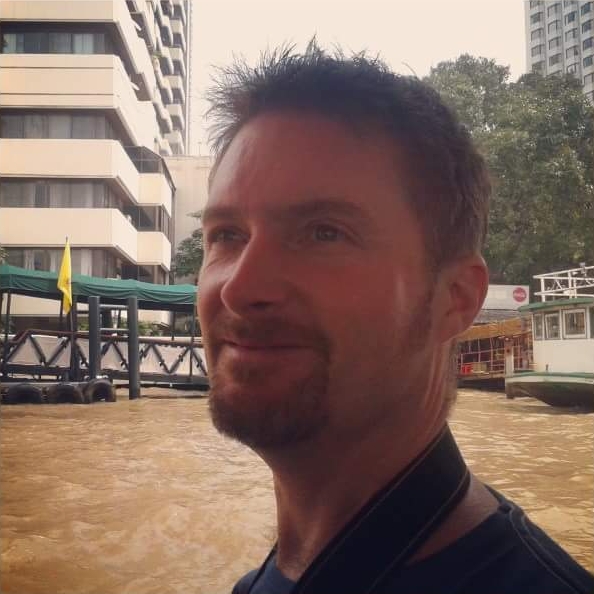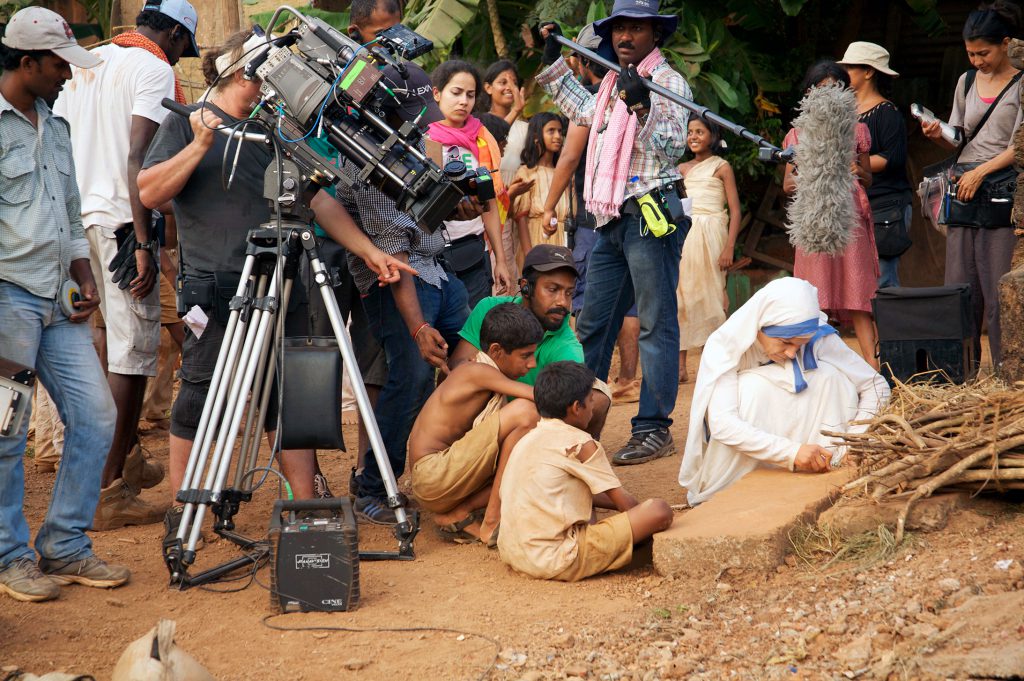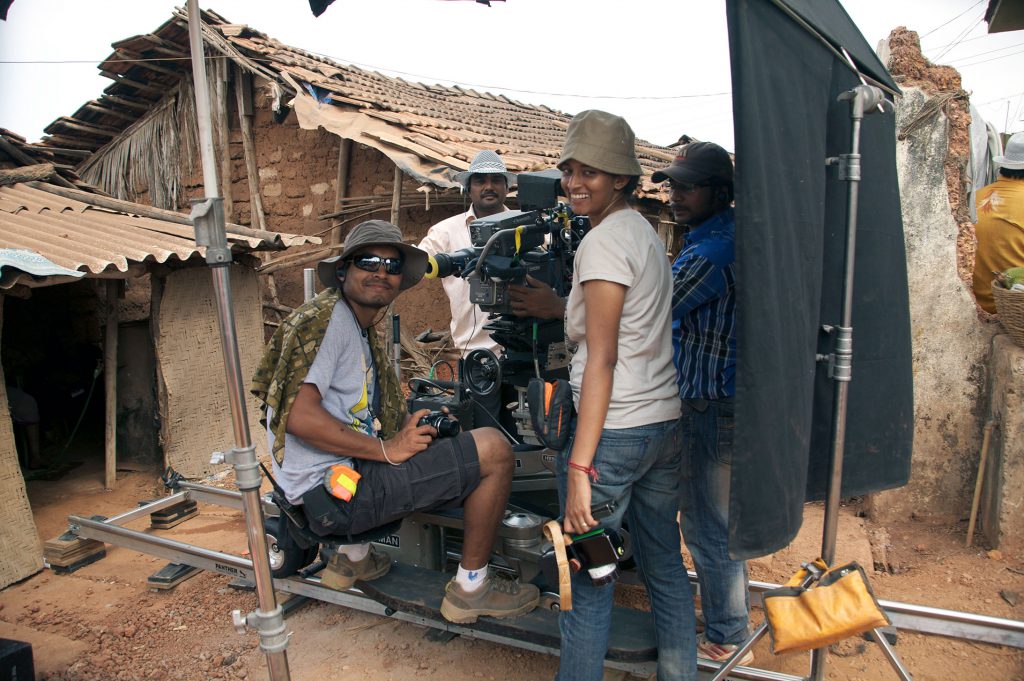A Producer’s Survival Guide to India - Part 5: Local Crew and Equipment
India is an astounding, ever-changing, chaotic melting pot of ideas, religions, landscapes and history that contribute to its mind-boggling diversity. Perhaps this is why so many creative minds have been attracted to the sub-continent over the years? It’s impossible to run out of inspiration. This five-part series will arm you with information, tips and advice to help get you started.
 The Indian film industry is huge. By volume of films it’s the largest film industry in the world. Finding talented English speaking senior crew with international experience is not difficult. However, crew with this profile are obviously at the top of their game and therefore not the cheapest.
The Indian film industry is huge. By volume of films it’s the largest film industry in the world. Finding talented English speaking senior crew with international experience is not difficult. However, crew with this profile are obviously at the top of their game and therefore not the cheapest.
The more junior crew positions can be filled with cheaper talented people who speak little or no English. This isn’t a problem if their HoD or supervising senior crew member speaks English as you can communicate via them.
The technical standard, creativity, and expertise of Indian crew are excellent if you know where to look. Wes Anderson worked with Key Grip, Sanjay Sami on The Darjeeling Limited and has flown him round the world for his productions ever since. Oscar nominated DoP Jack Green met Gaffer Rishi Umrania on The Letters and said: “he’s excellent; as good as [anyone] I’ve ever worked with.”
A strange quirk of narrative film and TV production in India is that sync sound still hasn’t been widely adopted. This could be because of the lack of soundstages or maybe because Indian cities are so incredibly noisy when shooting on location? Whatever the reason it does mean that good location sound recordists with extensive narrative experience are in short supply. There are a few but they’re often booked up. Many foreign productions elect to bring their sound department and equipment with them.
 Hair and make-up is another area lacking in the standard of international crew. There is only a handful of talented artists with international experience who are capable of handling demanding high profile talent. Local HMU crew often struggle when it comes to Caucasian skin and hair as they don’t have many opportunities to gain experience. Beyond minor injuries and simple aging techniques, SFX make-up and prosthetics expertise are practically non-existent. For these reasons, many productions bring their HMU Supervisors with them.
Hair and make-up is another area lacking in the standard of international crew. There is only a handful of talented artists with international experience who are capable of handling demanding high profile talent. Local HMU crew often struggle when it comes to Caucasian skin and hair as they don’t have many opportunities to gain experience. Beyond minor injuries and simple aging techniques, SFX make-up and prosthetics expertise are practically non-existent. For these reasons, many productions bring their HMU Supervisors with them.
Many foreign productions also bring their stunt coordinators with them. Health & Safety standards in India might be different to those you expect at home. Some film insurance providers outside India will insist that you fly in internationally accredited coordinators to maintain standards.
It is entirely possible to fly in to India with very few essential cast and crew and come away with excellent footage mainly using cast, crew and equipment available locally. It’s well worth taking the time to investigate your options before flying in large numbers of people. Your local cast and crew will be used to the local environment and many will know each other from previous productions. The value of local experience and knowledge should not be underestimated.
 Most narrative productions rent the majority of their equipment in India as it makes economic sense when large volumes of heavy equipment are required over long periods. And in the event of equipment failure, items can be replaced quickly by your Indian supplier.
Most narrative productions rent the majority of their equipment in India as it makes economic sense when large volumes of heavy equipment are required over long periods. And in the event of equipment failure, items can be replaced quickly by your Indian supplier.
For more sensitive critical equipment, choose your supplier carefully. Some suppliers service cameras and collimate lenses in a laboratory environment after each rental and some don’t bother at all until something goes wrong.
Imported electrical equipment attracts very high import duty so some cheaper lighting suppliers use cheap Chinese knock-offs instead of their branded international equivalent, which can yield unwanted results such as flicker and colour casts. You get what you pay for.
You will find most of the gear you use at home is available to rent in India. Some state of the art gear is quite rare but most things are available. The exception is dedicated helicopter mounts for cinema cameras. India has some talented grips who can rig a camera to shoot out of the side door using gimbals but if you need to shoot all around then you’ll need to bring a mount with you.
As the head of Goa Film Services, Tony Cordeaux has years of experience navigating India's production and locations industry. For more information about filming in India, you can contact Tony here.
Related Posts
- A Producer’s Survival Guide to India – Part 2: Customs and Insurance
- A Producer’s Survival Guide to India – Part 4: Budgeting
- Filming locations and logistics in India
- Scouting in Western Norway: Where high-tech structures meet epic natural landscapes
- A Producer’s Survival Guide to India – Part 1: Visas
- A Producer’s Survival Guide to India – Part 3: Travel
- On location with Michael Brook, Manager of Screen Auckland
- Shooting in the Czech Republic with Film Commissioner Ludmila Claussova
Related posts:
Comments
Not Logged in
You must be logged in to post a comment
There are no comments